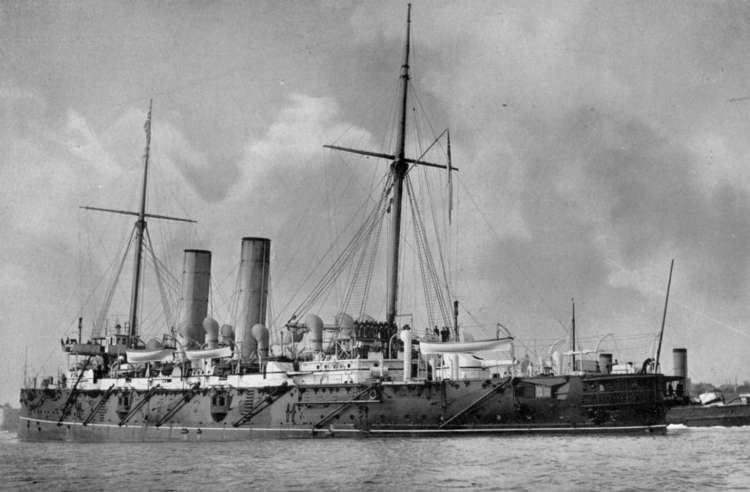Active 1795–1939 Branch Royal Navy | Country United Kingdom Type Fleet | |
 | ||
Garrison/HQ Table Bay, Simonstown, South Africa | ||
The Cape of Good Hope Station was an operational command of the Royal Navy and one of the geographical divisions into which the British Royal Navy divided its worldwide responsibilities. It was formally the units and establishments responsible to the Commander-in-Chief, Cape of Good Hope. the station operated from 1795 to 1939.
From 1750 to 1779 the Cape of Good Hope became strategically important due to the increasing competition between France and Great Britain for control of the seas. In 1780 Holland joined the American Revolutionary War in alliance with France and Spain against Great Britain; the British Government were aware of the consequences should the Cape of Good Hope fall and the impact it would have on its trade links with India and put a plan into place to capture the Cape and circumvent its use by the enemy. The first attempt was subject to prolonged delays and the fact that the French were able to reinforce their defences enabled them to successfully defend it from the British attack. From 1781 to 1791 various attempts were made to capture the station: all failed and it remained under the control of France and the French were successful in attacking and disrupting the trade cargo of the East India Company's ships that were travelling between Asian subcontinent and Europe. In 1792 hostilities temporarily ceased and by 1793 the Directors of the East India Company expressed their concern about the cape being retained by the French. The British government and the Admiralty decided to act and successfully retook it in 1795: the first Naval base was established at Table Bay.
In 1802 the British government agreed to restore the Cape to the Dutch control but this was not finalized until 1803 and lasted until 1806 when a new British Administration under William Pitt cancelled the agreement between both countries and re-took the cape once more in 1807 which effectively from this point on remained under British control. In 1811 the Royal Navy decided it wanted to move from its current base to a new base at Simon's Town bay; however the initial facilities took approximately three years to complete and were not ready until 1814. From 1815 to 1849 the base was mainly used for re-fitting and repair work on vessels and acted as a port of call for nautical surveyors who were mapping the region. During the 1850s and 1860s improvements were made to the dockyard facilities with some being re-built in order to accommodate larger ships. On 17 January 1865, it was combined with the East Indies Station to form the East Indies and Cape of Good Hope Station; however, the station was recreated as a separate station on 29 July 1867. From 1870, it absorbed the former West Africa Squadron. By the start of the Second Boer War in 1899 a long period of relative peace had existed; the station became the main base for British Forces disembarking and embarking during the war and for supplies and equipment being shipped from Britain for the duration of the conflict.
In 1910 a new East Dock was built together with a dry dock facility which proved timely in the event of the breakout of the First World War. From 1914 to until 1919 its primary tasks was to seek out and destroy German commerce raiding forces. During the interwar period it resumed the work of maintaining and refitting vessels stationed there and those travelling en-route to Asia. In 1939, at the start of the Second World War, the base played an early prominent role in the Battle of the Atlantic, and the hunt for the German pocket battleship Admiral Graf Spee, that led to the Battle of the River Plate. After the conclusion of that engagement the station ceased as a command operations center with the senior naval staff moving to the newly formed South Atlantic station headquartered at Freetown. The naval base remained as part of that command until 1957. In 1958 the British government handed over the facility to the South African Navy.
Commanders-in-Chief
The commanders-in-chief were:
Commander-in-Chief, Cape of Good Hope Station
Note: from 1803-06 a Dutch colony
Note:Incomplete list of commanders from 1853 to 1857
Commander-in-Chief, Cape of Good Hope Station and West Africa Station
Commander-in-Chief, East Indies & Cape of Good Hope Station
Commander-in-Chief, Cape of Good Hope Station and West Africa Station
Commander-in-Chief, Africa Station
Note: Command transferred to Commander-in-Chief, South Atlantic Station in 1939.
